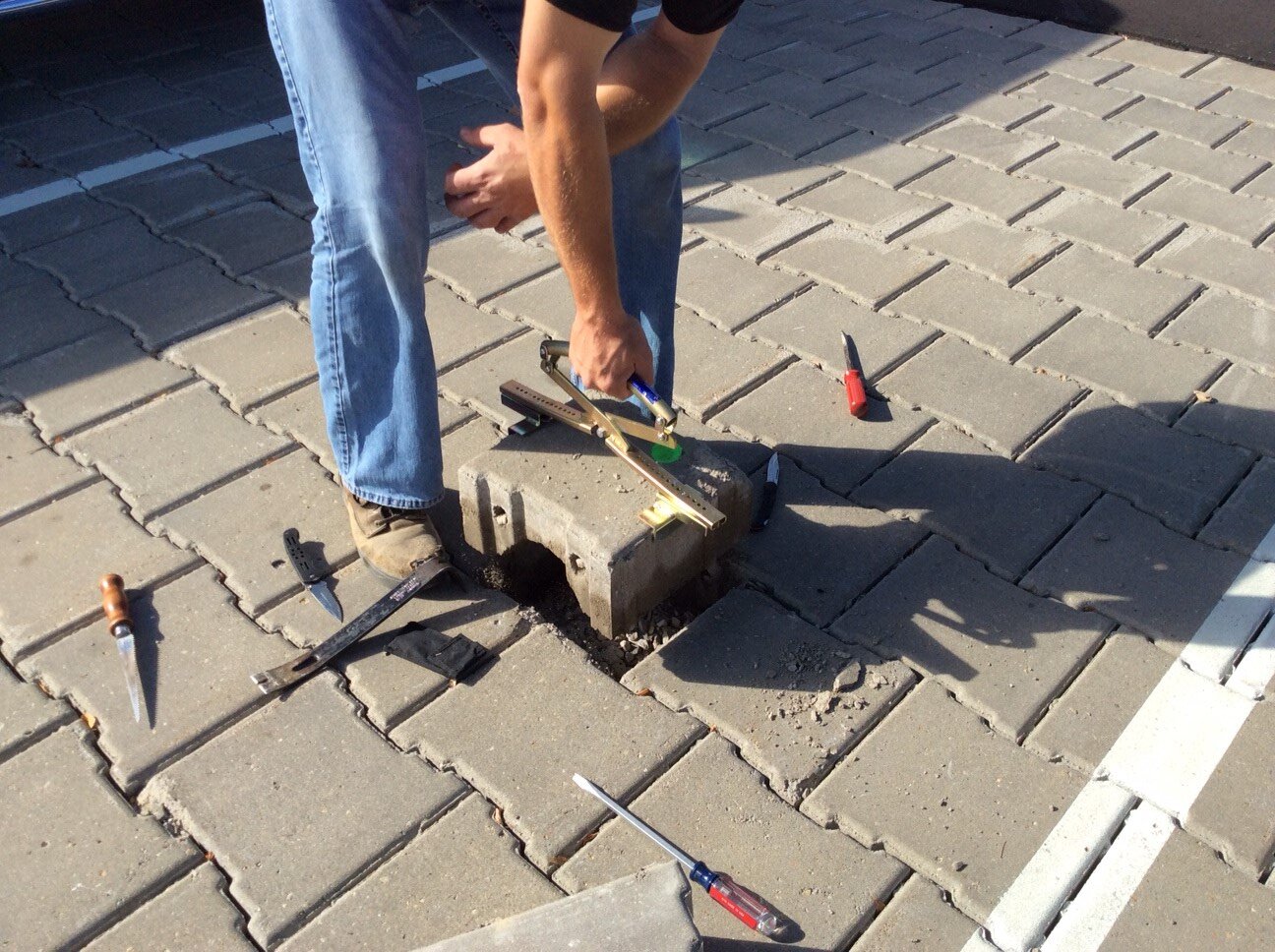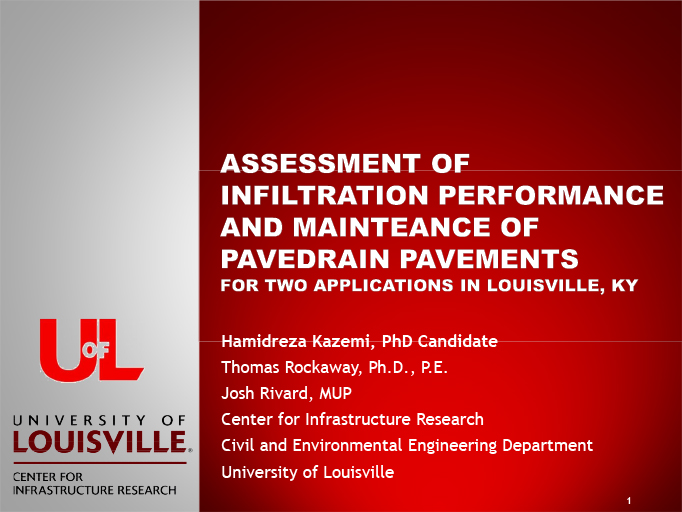Maintenance on the PaveDrain system is drastically different from other pervious or permeable surfaces.
Due to the size of the individual PaveDrain blocks, the joints are designed to be left open; the added expense of aggregate interlock and re-filling is not required. Each individual block interlocks and is surrounded by 6 additional units.
The 1/4" joint between the individual PaveDrain blocks is a well-designed balancing act between form and functionality. The gap is well within ADA requirements, but also allows a significant amount of water to drain down the sides.
Over time the sediment particles continue to be washed down into the larger diameter stone bedding layer. (SEE CROSS-SECTION). Leaves and other small biodegradable materials will be broken down in the aggregate bedding layer from the water and air that is allowed into penetrate down into the system.
Following the initial installation, the PaveDrain system should be checked bi-monthly to assess the amount of infiltration still occurring. Ideally, the visual inspection should occur during a rain event. A residential or urban setting with a significant amount of debris may need to be checked more frequently.
PAVEDRAIN MAINTENANCE MANUAL
(Updated on 1/2023)
Cross-section end view.
Unlike other permeable systems, even if maintenance is not regularly carried out the PaveDrain system can be back in working order by the PaveDrain VAC Head.
The open joint concept of the PaveDrain system allows sedimentation and debris that washes off of traditional surfaces to be washed down between the joints of the PaveDrain system and into the aggregate bedding layer.
It could be years before the PaveDrain System needs to be maintained.
However, it is recognized that even the PaveDrain System can clog in a residential or urban streetscape with heavy debris. Trees (magnolia trees, willow trees, evergreens, etc.) that drop an excessive amount of foliage (cones, seeds, pines, leaves) onto the PaveDrain System may need to be occasionally vacuumed with the PaveDrain Vac Head for this type of foliage.
If a combination truck is not available, then the second best option is to utilize compressed air with a wand attachment. A video of this process is available on line.
Click here for the PaveDrain Vac Head Instruction Manual
PaveDrain Vac Head (left) attached to Combination Vac Truck (right).
PaveDrain Maintenance Demonstration
The Unmistakable PaveDrain System Maintenance Advantage
As a worst case scenario no other system can be removed allowing for the subgrade to be cleaned and then re-installed.
Maintenance will vary greatly from site-to-site depending on the amount of silt, sedimentation and storm events that occur. The internal storage chamber and larger diameter aggregate bedding layer allow for a significant amount of silts and sedimentation to occur. However, IF it is determined that the system needs cleaning, the PaveDrain System is the only permeable product that is designed to be removed, the aggregate drainage layer cleaned, then re-installed in the same order using all of the original materials. It is doubtful that an entire parking structure will need to be removed. It is anticipated that only a minimal number of blocks will require removal and subsequent re-installation.
The PaveDrain System can be mechanically lifted for more thorough cleaning.









